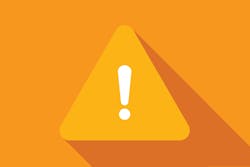By now, I’m sure you’ve all heard plenty about the recent lawsuit against John Eagle Collision Center in Dallas, right? I mean, this is a crucial, crucial case that could have a large impact across the industry. We’re well aware of the basic facts: The shop performed an improper repair (using glue rather than welds in replacing a steel roof) that led to a life-threatening situation for the vehicle’s passengers. In the end, the shop was found liable (remember that I used that word) and ordered to pay $31.5 million in damages.
Those are the basics to it, but what can we—and should we—learn from this? Well, there are some very clear takeaways that I hope all of us can glean from this.
Now, I want to preface everything I say with a little disclaimer here, my friends: I haven’t seen the transcripts from the trial, nor was I in attendance when it took place. The insight I have on this case is from conversations I’ve had with people who were there and are intimately involved with this case, including hearing a presentation from the victims’ attorney in the lawsuit, Todd Tracey.
That said, there are three main points I think everyone—and I repeat, everyone, as in every, single person owning, operating or working in a repair facility—should take away from this verdict.
1. Liability does not cease when vehicle ownership transfers.
This isn’t just specific to this case. It’s a very important fact to understand with all repairs.
Most shops say they will only warranty the car’s repairs to the person who owns the vehicle at that time. There’s no transferrable warranty. If I fix your car, I warranty it to you—that’s the idea. Well, one of the things that has come out in this trial is the clear difference between liability and warranties. When you fix a vehicle, it doesn’t matter if that vehicle changes ownership five times after that, each time it transfers ownership, that liability on the repair your business performed stays with you. Liability does not stop because ownership changes. Please, please understand this.
2. “Recommended” is the new “required.”
So, I’m guessing that many of you have heard this pushback from insurers on OEM recommended repairs: “Well, it’s just a recommendation; it’s not necessary to do it.” Well, one of the things the judges and the jury in the John Eagle trial made very clear is that they viewed the term “recommended” as it being required by the OEM.
3. Be mindful of false advertising and negligence.
In that same line of thinking, Tracey in his presentation mentions that if you advertise your certifications—you’re a Honda ProFirst Certified Shop, or you’re Audi certified, or you’re BMW factory trained—you’re implying to customers that you perform repairs according to OEM requirements and regulations. And if you don’t do that, then it’s negligence. It became very clear: If you put that claim on there, you imply that you will perform repairs to OEM standards; if you don’t perform to those standards, that’s negligence.
At the end of the day, the largest lesson here is that when we fix a vehicle, our contract is with that vehicle owner—not the insurer. And the insurer refusing to pay for certain repairs and procedures does not remove the liability from our shops.
Let’s repeat that just to be clear: The insurer refusing to pay for certain repairs and procedures does not remove the liability from our shops.
With every repair, we must reasearch OEM repair procedures, and vehicles must be scanned with an OEM scan tool. But researching and scanning isn’t enough. As owners and managers of collision repair shops, we need to make sure technicians aren’t deviating from the process. There are instances when the techs themselves could be held liable if that was the case. The charges can follow whoever touches the vehicle.
Everyone in our businesses needs to know what is expected of them and what can be done to prevent an issue like this from happening to you and your business. We have a lot at stake and we need to ensure that all of this is being following to the nth degree. It’s preventable if you can make your good practices repeatable. So, let’s not make this story repeat itself.
About the Author

Mike Anderson
Mike Anderson, the former owner of Wagonwork Collision Centers in Alexandria, Va., operates CollisionAdvice.com, a training and consulting firm that assists shop operators nationwide. He is also a facilitator for Axalta Coating Systems’ 20 Groups in the U.S. and Canada, and is an Accredited Automotive Manager. Reach Anderson at [email protected].
